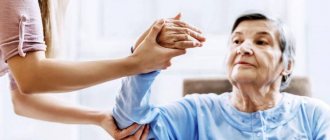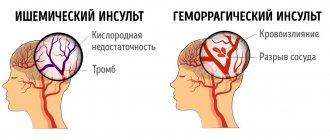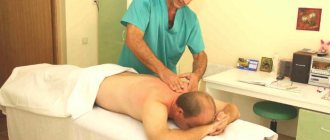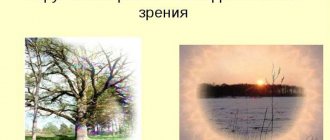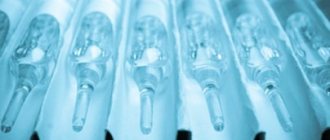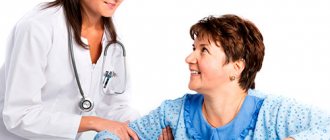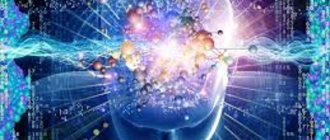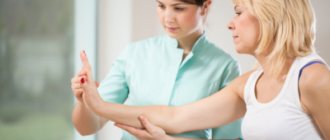In all patients who have suffered a stroke (acute cerebrovascular accident), the functions of the central nervous system and peripheral nerves are impaired. Disturbances may appear minor (the patient speaks slowly, the limbs are slightly weakened) or be severe (the patient is immobilized, does not speak, is blind). Therefore, after a cerebral hemorrhage, when a person is discharged from the hospital, rehabilitation after a stroke is necessary in order to avoid serious consequences and fully recover.
Thanks to rehabilitation measures, there will be a partial or complete restoration of the affected neurons or the prerequisites will be created for the distribution of inaccessible functions to the brain nerves that have not been damaged. A patient who has received treatment at all stages of a stroke again learns to sit down, move, talk, and perform simple actions.
Recovery takes more than one month or year, and sometimes even 5-10 years. Without rehabilitation measures, it is impossible for the victim to live a full life. Not everyone can stay in a hospital setting for a long time, so the main rehabilitation takes place at home.
Recovery in the hemorrhagic form of stroke lasts longer than in the ischemic form of the pathology.
Stroke
One of the most difficult diseases in terms of treatment and recovery is stroke . Depending on the pathogenesis, diseases of ischemic and hemorrhagic types are distinguished. In the first case, due to disruption of cerebral blood supply and lack of blood flow, necrosis of brain tissue occurs. In the second, hemorrhage occurs through destruction in the walls of blood vessels.
For reference. The reasons leading to different types of stroke are the same. These are high blood pressure, atherosclerosis, tumors. Factors such as obesity, physical inactivity, constant tension, overwork, and bad habits increase the risk of a stroke.
An important difference in the development of hemorrhagic stroke and ischemic stroke is that in the first case, too thin blood leads to a stroke, in the second - increased viscosity.
This difference plays an important role in diagnosis, treatment and subsequent recovery.
Reanimation department, intensive care
Here, stable functioning of the lungs and cardiovascular system is restored, primary measures are taken to restore adequate blood supply to the brain and prevent the most dangerous complications.
Indications for hospitalization in the intensive care unit or intensive care unit (2).
| Intensive care ward | Intensive care ward |
|
|
The duration of intensive treatment is very individual. In mild forms of the disease it can last several days, in moderate and severe forms it can last several weeks. The main criterion for a patient’s discharge is the absence of indications for further stay.
Stages of development
The disease goes through several stages in its development.
Acute lasts for 21 days from the moment of impact. It distinguishes the most acute stage - a duration of five days, characterized by an increase in symptoms . The rapidity of diagnosis at this stage and proper treatment make it possible to restore the functions of some neurons that did not die, but were damaged due to lack of nutrients.
The early recovery period after a stroke follows the acute stage and lasts up to six months. At this time, compensation for disturbances and restoration of normal nutrition of neurons begins.
The rehabilitation stage conventionally begins 6 months after the impact and lasts on average up to a year. At this moment, glial formations and cysts form in the lesions.
The last stage is the residual stage, lasting throughout the rest of life.
For reference. Despite the fact that, based on the terminology, it seems that recovery after a stroke begins 3 weeks after the stroke, doctors recommend starting this process immediately after achieving stability in the patient’s condition.
Complications
In many cases, a stroke results in death. But even if this disease leaves a person alive, it rarely goes away without complications.
Paralysis is considered a common consequence of a stroke. A person loses the ability to move one or both limbs on one or both sides. There is complete paralysis, in milder cases – muscle weakness, which does not allow normal movement, walking, or self-care. Often victims of the disease begin to suffer from convulsive seizures, severe pain, and bowel disorders.
Motor disorders are associated with loss of coordination and inability to perform voluntary actions.
A victim of the disease who has retained the ability to walk can be recognized by a sloping, deformed face, limbs bent in a specific way, and impaired gait.
Bedridden patients develop bedsores, which, in turn, lead to severe tissue damage and intoxication of the body.
Visual impairment and, in some cases, hearing impairment are observed. Often victims lose normal speech. She becomes confused and inarticulate. It is difficult for the patient to find words and combine them into sentences and text. In some cases, the patient can only moo.
Patients often lose the skills of reading, counting, logical operations, anticipating the development of events, and cannot solve simple problems. Lost connection with reality. Patients live in their own world, far from reality, and do not understand where they are. Consciousness becomes narrowed, the ability to create and understand creativity disappears.
The psycho-emotional sphere suffers. Most victims become prone to depression, apathy, anxiety, and suffer from lack of confidence in themselves and their future.
Emotional lability is noted. Patients become aggressive. Sometimes being with them is unsafe for others. Persecution mania and phobias develop.
For reference. In approximately 10% of cases, victims develop epilepsy. In elderly patients, exacerbation of cardiovascular, respiratory diseases, and pathologies of the genitourinary system is noted.
Symptoms
How early you can recognize the disease and seek medical help depends on how long you stay in the hospital with a stroke. The first signs of the disease are usually the following:
- numbness of the face or tips of the fingers and toes;
- acute and increasing headache;
- “flies” before the eyes;
- nausea, vomiting;
- dizziness;
- loss of orientation in space;
- speech disorders.
In addition, the following symptoms and warning signs of a stroke can be identified:
- Headache that often occurs when the weather changes.
- Dizziness that worsens with movement.
- Noise or ringing in the ears, which may be constant or intermittent.
- A sharp deterioration in memory, especially associated with events that occurred in the recent past.
- Sleep disorders.
You should also seek help from a doctor if you experience chronic fatigue or a change in performance for the worse.
General principles of rehabilitation
The treatment and rehabilitation program for patients after a stroke includes a variety of measures to normalize the condition and maintain a decent standard of living.
Rehabilitation methods after stroke are aimed at:
- Proper care to prevent the formation of bedsores and the development of secondary diseases.
- Providing a healthy diet with sufficient vitamins and nutrients.
- Restoration of motor functions.
- Psycho-emotional rehabilitation.
- Normalization of the cognitive sphere.
- Speech restoration.
Recovery stages
Directly in the residual process there are four stages. The purpose of the first is to support the most important functions of the body and preserve life. It often corresponds to the acute period.
At the second stage of recovery after a stroke, patients, if necessary and possible, are taught self-care skills.
On the third stage, conditions are created for restoring the ability to move, sit, talk, and think.
The main direction at the fourth stage of rehabilitation for stroke is related to the restoration of fine motor skills, speech, thinking, and professional skills.
Recovery time
The timing of recovery after a stroke and the normalization of functions are influenced by the severity, extent of the lesion, the age of the patient, and the type of stroke.
It takes up to two months to partially restore minimal visual impairment, mobility of arms and legs, and coordination after an ischemic stroke.
Patients and their relatives are often interested in the question of whether it is possible to achieve full recovery after a stroke. In the case of a mild lesion, the answer will be in the affirmative; it will take up to three months. Probably, the basis of this process is a return to the pre-stroke state due to restoration of functions and incomplete cell damage.
The recovery period after a stroke, characterized by severe, persistent disorders, is 6 months. Usually only self-care skills return.
For reference. Very rarely, complete recovery is possible; in this case, the rehabilitation process takes about a year. Recovery processes occur due to the fact that some cells take on the functions of the affected ones.
In very severe forms, patients can sit after two years. Full recovery is impossible because the affected area is too large. The surviving cells cannot take on compensatory functions.
It usually takes much longer for speech and sensation to return than for normal movements.
In general, it is believed that rehabilitation after an ischemic stroke is easier than after a hemorrhagic one.
Principles of rehabilitation
Usually, after discharge, doctors give advice on how to recover from a stroke. Here are some basic principles.
For reference. Normalization of lost functions can only be achieved with regular exercise. Classes must begin as early as possible. Let it be at first only attempts to roll your eyes or clench your fists.
As the symptoms of a stroke disappear, classes cannot be stopped.
Rehabilitation treatment
After completing the course of general therapy, the recovery stage begins. There are several options for passing it.
| Severity of violations | Type of rehabilitation facility |
| Full recovery | Outpatient follow-up treatment or sanatorium treatment |
| Severe deficit: the patient cannot move independently or moves with difficulty, requires assistance in meeting basic needs | Rehabilitation department |
| Moderate or mild deficiency: slight deviations from the norm remain, but the person can move independently and take care of himself | Rehabilitation center |
Only the second and third options require a permanent stay in the hospital. The duration of rehabilitation depends on the severity of the violations. It can range from several months to a year or more. As the health of patients with severe deficiency improves, they are transferred to rehabilitation centers. If after a long period of time no improvement is observed, the patient is transferred to home treatment.
Drug therapy
Rehabilitation includes drug therapy . It is aimed at comprehensively maintaining the body’s performance, improving blood circulation, and protecting neurons.
Important. The basic principle of using drug therapy is following the doctor’s recommendations.
Appointed:
- Drugs to improve cerebral blood supply. This is Cerebrolysin, Cavinton.
- Medicines aimed at activating metabolic processes. Cortexin and Solcoseryl tablets are used. Actovegin is administered intravenously.
- Nootropic drugs. Their goal is to activate thinking and memory. They help restore brain cells. Prescribed Piracetam, Lucetam.
- Drugs that improve the transmission of impulses in the nervous system. Vinpocetine is used.
- Sedatives. Medicines of this type help relieve anxiety and calm down. Persil, tinctures of valerian, motherwort are prescribed. Glycine not only has a calming effect, it also has a stimulating effect on mental abilities.
It is recommended to take most of these medications in courses, each lasting up to six months. Physiotherapy with medications is sometimes recommended.
Recovery from an ischemic stroke includes the use of blood thinners.
Patients are treated symptomatically. Muscle spasms are relieved with muscle relaxants: Sirdalud, Mydocalm. It is recommended to treat convulsive symptoms with Phenytoin and valproic acid. The duration of the course and frequency of administration are determined by the doctor.
How to treat ischemic cerebral stroke
All patients with stroke, regardless of its nature, receive basic therapy. In addition, differential therapy of ischemic stroke is carried out, taking into account its pathogenetic subtype.
Specific therapy
According to the methodological recommendations of the Ministry of Health of the Russian Federation for 2000, the treatment strategy for patients is based on early diagnosis of the pathogenetic subtype of stroke. The basic principles of pathogenetic treatment include:
- restoration of blood circulation in the ischemic zone (recirculation, reperfusion)
- maintaining the metabolism of brain tissue, its protection from structural damage (neuroprotection).
Basic recycling methods:
- restoration and maintenance of systemic hemodynamics
- drug thrombolysis
- hemangiocorrection (normalization of the rheological properties of blood and the functionality of the vascular wall)
- surgical methods of recirculation: extra-intracranial microanastomosis, thrombectomy, reconstructive surgery on arteries.
Basic methods of neuroprotection:
- restoration and maintenance of nervous tissue homeostasis
- drug protection of the brain
- non-drug methods (hyperbaric oxygen therapy, cerebral hypothermia).
Restoring blood circulation and maintaining the metabolism of brain tissue require therapeutic measures aimed at combating cerebral edema.
Decongestant therapy for ischemic strokes includes:
- administration of osmotic diuretics
- hyperventilation
- neuroprotectors and maintaining homeostasis of nervous tissue have an anti-edematous effect.
Basic therapy
The tactics of basic therapy are aimed at general measures to stabilize vital functions, prevention and treatment of possible complications. The Ministry of Health of the Russian Federation (2000) recommends the following basic therapy to all patients with acute cerebral circulation disorders:
- measures aimed at normalizing the function of external respiration and oxygenation - sanitation of the respiratory tract, installation of an air duct, tracheal intubation, and, if necessary, mechanical ventilation.
- regulation of the function of the cardiovascular system: maintaining blood pressure 10% higher than the numbers to which the patient is adapted; antiarrhythmic therapy for cardiac arrhythmias; for coronary heart disease, antianginal drugs (nitrates) are prescribed; drugs that improve the pumping function of the myocardium - cardiac glycosides, antioxidants, optimizers of tissue energy metabolism.
- control and maintenance of homeostasis, including biochemical constants, water-salt and acid-base balance.
- neuroprotection - a set of universal methods for protecting the brain from structural damage - begins at the prehospital stage (may have some features for different subtypes of stroke).
- measures aimed at reducing cerebral edema
- measures to prevent and treat complications
- symptomatic therapy, including anticonvulsants, psychotropic (for psychomotor agitation), muscle relaxants, analgesics, etc.
Thrombolytic therapy
When a patient is admitted within 6 hours from the moment of illness and confirmation of the ischemic nature of the stroke, it is possible to use thrombolytic therapy to lyse a thrombus or embolus and restore blood flow in ischemic brain tissue. It is assumed that it is most appropriate for acute blockage of the middle cerebral or basilar artery, a cardioembolic type of stroke. From 1995 to 2000, 10 randomized and placebo-controlled trials were conducted on the use of thrombolytic therapy for ischemic stroke.
According to studies, it is advisable and justified to use tissue plasminogen activator (at a dose of 0.9 mg/kg, maximum 90 mg; 10% is administered intravenously in a stream over 1 minute, and 90% is administered intravenously in a drip over an hour) in the first 3 hours after the onset of the first symptoms of the disease and is inappropriate for a longer history. After 3 and up to 6 hours from the onset of stroke symptoms, only intraarterial (selective) thrombolysis with tissue plasminogen activator is indicated. The use of streptokinase is not recommended due to the unacceptable risk of hemorrhage and death.
Contraindications to this type of therapy include:
- a history of intracranial hemorrhage, hemorrhagic diathesis, as well as recent (less than 3 weeks) bleeding from the gastrointestinal tract or urinary tract
- age over 80 years
- mild degree or significant regression of neurological disorders before the start of thrombolysis, as well as severe stroke
- blood pressure above 185/110 mm Hg. Art.
- impairment of consciousness to the point of stupor and coma
- blood clotting disorders
- recent surgery.
Care
In recovery after a stroke at home, much attention is paid to care. The room in which a person spends the most time must be kept clean and tidy. Be sure to ventilate it every day. At the same time, it is important not to give the patient a cold. A weakened body after a stroke is susceptible to infectious diseases and pneumonia.
Preparations are made to provide the patient with the necessary care even before he is discharged. You need to purchase special diapers, a bedpan, and a mattress against bedsores. Place a pole or hang reins next to the bed so that a person can pull himself up, sit down, and stand up. It is advisable to lay a thick soft carpet near the bed. An accidental fall will reduce pain.
An unfortunate fall may result in serious injury. The author of these lines’ father fell unsuccessfully after standing up abruptly. This fall resulted in a transition into a coma followed by death after 10 days of coma.
In the morning and evening, it is advisable to wash the stroke victim or at least wipe him with a warm, damp towel. His eyes and mouth are washed and his teeth are brushed.
For reference. To prevent bedsores, the sheet is pulled so that there are no folds, and all the crumbs that remain after eating are removed. The immobilized patient is turned on his side every 2 hours. When bedsores form, they are treated with an alcohol solution and talc.
Rehabilitation after a stroke at home
Without continued treatment for stroke at home, a person develops irreversible anatomical and functional changes.
Only in the early recovery period, up to 6 months from the moment of illness, is it possible to return to maximum activity. The first 3 months are important to activate motor skills.
A rehabilitation program for home is developed by doctors taking into account the severity of the disease, the degree of independence of a person at home and his age. These are individually developed methods of influence that complement the prescribed medications.
Continuing recovery in the post-stroke period helps:
- prevent the development of complications;
- stop the progression of impaired functions;
- prevent relapse;
- partially or completely restore lost abilities.
Diet after stroke
Diet therapy is considered a fundamental factor in creating a nutrition program at home. Table No. 10 was developed for the group of cardiovascular diseases. This is a balanced food, the task of which is to normalize blood pressure and blood circulation, reduce the load on the heart and blood vessels.
At home, the diet is designed to:
- reduce the calorie content of dishes;
- limit salt intake;
- reduce cholesterol;
- increase intake of foods with potassium and magnesium.
To get used to the new menu and not feel hungry, the daily diet is divided into 4-5 meals. The list of products containing substances necessary for the body includes:
- fish;
- lean meats;
- nuts, dried fruits;
- cereals;
- fruits vegetables;
- vegetable oils.
Avoiding the following will help prevent the development of atherosclerotic plaques:
- pork, lard, sausage, smoked meats;
- conservation;
- alcohol;
- heavy cream, sour cream;
- sweets.
A lipid-lowering diet at home after a stroke cannot be short-term. Such nutrition should become the patient’s way of life.
Has anyone in your family had a stroke?
Not really
Allowed physical activity at home
More than half of post-stroke patients permanently have motor impairments. Often these are hemiparesis (half the body is affected) and monoparesis (paresis of one limb). Maximum efforts to restore lost functions are required within 2-3 months.
Interesting: Drugs that improve blood circulation in the brain
Exercises for the face after a stroke
But you cannot stop at the achieved level. Gymnastic training should be introduced into a regular lifestyle. Exercises after a stroke develop the level of self-care and help restore the function of a paretic arm and leg.
A set of exercises for gymnastics at home is developed by a physical therapy doctor. Each exercise trains movement in a paretic limb and stops pathological contraction of muscles, ligaments, tendons (contracture).
In case of severe spasticity in the flexors, squeezing the expander and the ball is prohibited, as this provokes the appearance of muscle tone.
Therapeutic gymnastics is selected individually, taking into account the patient’s condition. In case of paralysis, relatives or an instructor help conduct passive gymnastics. Regular exercise activates neurons in the brain, which partially or completely compensates for neurological deficits.
The success and result of training depends on a person’s perseverance.
Restoration of speech and memory
The cognitive consequences of stroke manifest themselves in varying degrees of severity. Often this is aphasia (no speech) and dysarthria (impaired pronunciation). After a stroke, it is recommended to conduct classes at home with a speech therapist or neuropsychologist. In severe cases, the help of an aphasiologist is required. Specialists give many tasks for speech restoration and correction.
Regular mental gymnastics allows you to quickly adapt to life in the post-stroke period and avoid dementia in the future.
When memory is impaired, psychological disadaptation is noted. Such cases require performing memory training tasks. For this it is recommended:
- work with associations;
- play logic games;
- develop visualization;
- memorize poems, songs;
- solve crosswords.
In the absence of the opportunity to seek professional help, speech restoration after a stroke is carried out at home, using the manual by M.K. Burlakova “Correction of complex speech disorders.”
Pressure correction
Much attention is paid to patients who have suffered a hemorrhagic stroke with a history of hypertension. To prevent another rupture of blood vessels, be sure to monitor blood pressure, since hypertensive hemorrhages occur in 70% of hypertensive patients.
In addition to antihypertensive therapy, rehabilitation at home is aimed at maintaining a healthy lifestyle, namely:
- adherence to an anti-sclerotic diet;
- quitting smoking and alcohol;
- physical activity taking into account the condition.
Combating complications
From the first days after a cerebral accident, an important stage of the rehabilitation period is the prevention of recurrent strokes and the fight against complications. The group of conditions unfavorable for the patient’s life includes:
- Pneumonia. Appears due to aspiration (penetration) of food debris into the respiratory tract in patients with impaired swallowing, impaired consciousness, or paralysis. In such patients, a nasogastric tube is installed for feeding, and the head end of the bed is raised by 45°. For seriously ill patients without a cough reflex, the resulting secretion is sucked out.
- Deep vein thrombosis. Blood clots provoke pulmonary embolism. In addition to anticoagulants and other drugs, gymnastics, massage, and leg bandaging with elastic bandages for varicose veins are required.
- Bedsores. They develop in the absence of care. Damaged skin integrity causes severe pain and necrosis. Sepsis poses a mortal danger in necrotic tissues.
- Urinary tract infections. They arise as a result of prolonged catheterization of the bladder and urination disorders. Because of this, it is recommended to limit the use of the catheter.
Interesting: Extensive cerebral hemorrhage: causes and consequences of stroke
The development of complications negatively affects the outcome of the disease, therefore all therapeutic and restorative measures are aimed at preventing them.
Nutrition
When planning meals, the need to adhere to a diet, special principles of food preparation, and the implementation of actions necessary to eliminate problems with swallowing is taken into account.
A person suffering from a stroke is advised to follow a diet. Spicy, salty dishes, sweets are excluded, i.e., everything that can provoke an exacerbation of diseases that cause stroke.
Every day the menu includes at least 400 g of fruits, berries and vegetables. Bananas and blueberries are useful. It is recommended to consume low-fat fish and seafood at least twice a week. Dishes are prepared from oatmeal, wild rice, and bran. Dishes made from dietary meat are steamed, boiled, and stewed.
For reference. Limit the consumption of flour products, sweets, and foods containing animal fats. You need to drink up to 2 liters of clean water every day. Caffeinated drinks are prohibited.
All food served to the patient should be warm and soft so that he can swallow it easily. You can give baby puree. Force feeding causes a gag reflex.
In order for the muscles involved in chewing and swallowing to recover, a person must do special exercises several times a day. In many cases, sessions with a speech therapist are indicated.
Treatment of stroke with folk remedies and methods
Recovery with folk remedies after a stroke is not the main thing, but as an auxiliary effect it will be very effective.
Here you can use the following methods for resuming metabolic processes in the brain:
- Mix pea flour and honey in equal quantities. Take a teaspoon each time before meals.
- Also, a teaspoon a day, the patient can be given a composition of wormwood juice and honey, mixed in equal quantities.
- Offer the patient baths with rosehip roots to restore weak limbs. 5 tablespoons of crushed raw materials are poured with two glasses of boiling water. The limbs are lowered into the cooled bath for several minutes.
A tincture of pine cones after a stroke has an excellent medicinal and restorative effect . To prepare it, take 5 medium cones and rinse them with boiling water. The resulting component is poured with a glass of alcohol and left to infuse for 10 days.
After time, filter the tincture and add a teaspoon of apple cider vinegar to the contents. The tincture should be taken once a day, a teaspoon after meals.
An important issue in the presented preparation is the rule for collecting pine cones. When to collect pine cones for stroke ?
Cones should be collected from the beginning of July until mid-September - at this time they are already ripe. But it is better to use green cones - they contain more useful microelements.
Restoring everyday skills
After a stroke, many patients lose basic skills - they cannot eat or undress. A number of exercises will help you regain lost functions:
- Food. The assistant directs the movements of the affected hand to take food from the plate and bring it to the mouth.
- Opening the tap. It is better to sit the patient on a chair. An assistant guides the paralyzed or weakened arm to start the water. In this case, the healthy one is used to check the temperature.
- Washing. The assistant moves the paralyzed hand to the healthy one, helps to take a sponge and wet it.
- Combing. The patient sits, tries to take a comb and comb his hair. It is advisable to make some movements with the affected hand. A second person helps him maintain his balance.
- Putting on a blouse, T-shirt. The victim sits, slightly bent, puts his clothes on his knees, presses his paralyzed arm between his legs, and places his sleeve there. An assistant helps put the injured arm into the sleeve up to the elbow, then puts the healthy arm into the second sleeve and puts the T-shirt on the body.
For reference. The main role of the assistant when working on the return of everyday skills is to control the balance and guide the affected limb of the patient. This role will allow the victim to recover faster.
Movement restoration
Exercises to gain muscle strength, regain the ability to sit, stand, and walk. To restore movements after a stroke, exercises are performed from a lying, sitting, or standing position. Training methods for patients should take into account that before the victim begins training, a massage is performed to warm up the muscles. When performing tasks, avoid overwork and monitor your breathing.
It is advisable for a loved one or assistant to be close to the student and help him. The number of courses depends on the patient's condition.
From a lying position
A person from a lying position tries to bend, straighten his arms, rotate them at the elbow, wrist joint, clench his fingers into a fist, lift, bend his legs, move his foot.
First aid
The timeliness of care depends on how long people stay in the hospital with an ischemic stroke. One of the most important points is not only to recognize an acute condition and then call an ambulance, but also to provide the patient with all possible assistance. It consists of the following actions:
- If a person loses consciousness, you need to move him to the most comfortable position.
- The head should be turned to the side so that the patient does not choke on his own vomit.
- It is important to monitor a person's blood pressure in order to report them to the medical team.
Emergency doctors must describe all the symptoms, as well as provide information about the person.
Speech restoration
The ability to speak and make coherent sounds returns very slowly. It is often noted that even regular exercise over a long period of time does not bring any effect. Many begin to doubt and ask how to restore speech after a stroke.
Researchers say that it often returns suddenly, but this is facilitated by constant training.
Speech disorders can be treated with special exercises:
- grin;
- stretch your lips with a tube;
- move your tongue out of your open mouth;
- lick lips in a circle;
- bite either the lower or the upper lip;
- smile from the corners of your mouth.
The basic principles of speech restoration are the same as when teaching young children. Patients must constantly listen to words and coherent texts.
In the first stages, a person is asked to repeat sounds, then syllables and simple words. A little later, short poems, nursery rhymes, and sentences are included. Even in this state, rhyme can be perceived much easier than a monotonous monologue. Singing plays a big role in regaining speech.
Literature
- Denisov I. N., Kandyba D. V., Kuznetsova O. Yu. Diagnosis and tactics for stroke in general medical practice, including primary and secondary prevention, 2013
- GOST R 52600.5-2008 Protocol for patient management. Stroke, 2009
Unfortunately, diseases of the cardiovascular system are common today even among the young part of the country's population. Statistics show that the prevalence of stroke is about 3-4 people per 1000 in Russia, which is quite a high figure. How to recognize a stroke? Its symptoms and treatment. How long do you stay in hospital after a stroke?
Restoring intellectual functions
Typically, a stroke leads to impairment of memory, the ability to think, analyze, and anticipate consequences. Patients often resemble small children.
The memory restoration technique includes exercises for repeating syllables, numbers, and later words. At the first stage, it is necessary for the patient to be able to say what he just heard. Gradually, the gap between the perception of information and its repetition will increase.
Drawings, including children's drawings, are used so that the patient can name what is presented on them. Subsequently, comparisons are made and attempts are made to compose sentences and stories. Such tasks train memory and thinking.
Board games, conversations, and crossword puzzles are useful for restoring intellectual functions after a stroke.
People with relatively intact intelligence are recommended to engage in hobbies, read, watch and discuss films and plays.
Psychological support
For reference. Everyone who has retained the ability to understand the changes that have occurred to them has a hard time experiencing their new state. Hence the tendency to depression, loss of faith in oneself and one’s capabilities, apathy. In many cases, any deviation in health, increased blood pressure, or pain in the heart leads to fear of death or another stroke.
To alleviate the condition, accept oneself as one is, and gain strength to fight the disease, the patient is recommended, if possible, to attend classes with a psychologist or psychiatrist.
In addition to restoring good emotional well-being, doctors will help in organizing leisure activities. Their help can be invaluable in restoring the desire to communicate, to get out of the “box” of restrictions in which the disease has shackled its victims.
Working with a psychiatrist is indicated for aggressive patients and patients prone to panic attacks. It is likely that such conditions will need to be treated with medications and hypnosis. All victims are advised to play relaxing music.
